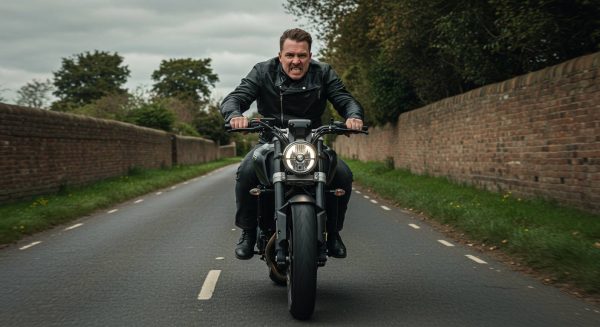When we throw our leg over a motorcycle, we tend to focus on the physical aspects of riding – the controls, the road conditions, and the traffic around us. However, our psychological state plays an equally crucial role in how we make decisions on the road.
The Impact of Emotional State
Our emotional state significantly affects our riding decisions. Anger, stress, or excitement can lead to more aggressive riding patterns, while anxiety might cause overcautious behaviour that could be equally dangerous. The DVSA’s National Standard for riding motorcycles specifically addresses this, noting that riders must “assess whether your ability to ride safely and legally is affected by your emotional state.”

Cognitive Biases on Two Wheels
As riders, we’re subject to various cognitive biases that can impact our decision-making. One common example is optimism bias – the belief that “it won’t happen to me.” This can lead to riders underestimating risks or overestimating their abilities. Another is confirmation bias, where we might selectively notice information that confirms our existing beliefs about our riding skills while ignoring evidence that suggests we need improvement.
The Role of Experience and Overconfidence
Experience is a double-edged sword in motorcycling. While it builds valuable skills and knowledge, it can also lead to overconfidence. The National Standard emphasises the importance of continuing to develop and update riding skills throughout one’s riding career, recognising that complacency can set in over time.
Social Influences and Peer Pressure
Group riding dynamics can significantly influence decision-making. When riding with others, we might feel pressured to keep up with more experienced riders or take risks we wouldn’t normally consider. This social pressure can override our usual judgment, particularly among younger riders.
Fatigue and Decision-Making
Mental fatigue has a profound impact on our ability to make sound decisions. The DVSA’s guidance highlights how tiredness affects concentration, reaction times, and risk assessment abilities. Poor riding position, excessive noise, and inappropriate protective clothing can all contribute to mental fatigue, creating a cycle that compromises decision-making.
Improving Psychological Resilience
Understanding these psychological factors is the first step toward better decision-making. The key is developing strategies to manage them:
Developing Self-Awareness
Regular self-assessment of our emotional state before and during rides is crucial. The National Standard encourages riders to “assess your own riding behaviour and identify areas needing work.”
Creating Mental Checklists
Establishing pre-ride routines that include both physical and mental preparation can help ensure we’re in the right state of mind before setting off.
Continuous Learning
Engaging in post-test training and regular skill updates helps maintain both technical proficiency and psychological resilience. This approach is supported by the NMC’s emphasis on incentivising access to post-test training.
The Road Ahead
By understanding how our psychology affects our decision-making, we can become more conscious riders. This awareness, combined with technical skill and experience, creates a more complete approach to road safety. After all, safe riding isn’t just about what we do with our hands and feet, it’s about maintaining a clear, focused, and balanced state of mind throughout our journey.
Remember, being a good rider isn’t just about mastering the machine; it’s about mastering ourselves. By acknowledging and actively managing the psychological aspects of riding, we can make better decisions and ultimately become safer, more confident riders.
